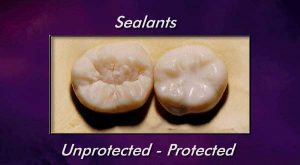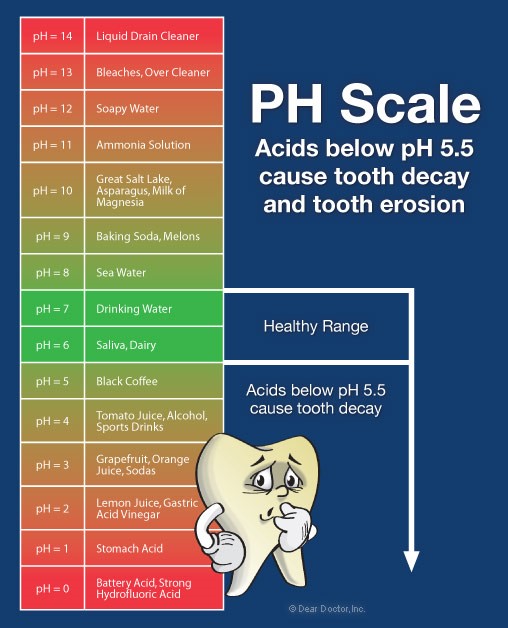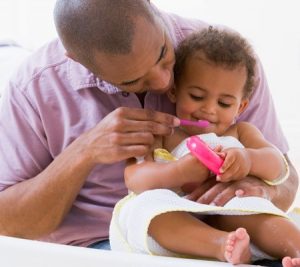LENOWISCO Health District’s School-Based Preventive Dental Program
Dental decay (or cavities) is the most common chronic disease in children and adolescents even though it’s largely preventable. Children with cavities can experience tooth pain that can interfere with eating and drinking and can lead to school absences. Strides have been made through education and fluoridation of public water systems, but there is still room for progress. Lenowisco has a dental program that provides preventive services and oral health education aimed at addressing the dental health needs of the children of the district.
Lenowisco’s school-based preventive dental program provides screenings, dental cleanings, fluoride varnish treatments, and dental sealants on permanent molars for children in elementary and middle schools within the district. Free dental services are provided to students whose parents have consented for their child to be seen by the school-based dental hygienist. Services are provided at no cost, based on each school’s free lunch eligibility status. The services are provided by a dental hygienist using portable equipment in a school setting where children are likely to be more at ease and where the barrier of transportation is not an issue. Following the visit, parents are informed of services provided and are given a list of local dentists, noting that this preventive visit is not a substitute for regular visits with the child’s dentist, and in particular referrals are encouraged for children who need restorative treatment (fillings or crowns). Parental/guardian consent is required before services are provided. At the beginning of the school year, consent forms with medical history forms are sent home with children. Parents who are interested in receiving the school-based dental services need to complete and sign the forms and return them to the school.
Education is a key component of any program that is focused on prevention. LENOWISCO’s dental hygienist is available to provide oral health education to children in local schools, day care centers, and summer programs.
 What are Sealants?
What are Sealants?
Sealants are a layer of white plastic that are applied to the chewing surface of children’s permanent molars. They act as a physical barrier to prevent food and bacteria from getting into the grooves of the teeth. Children don’t have to be numbed to have sealants placed because the plastic coating is only brushed on to the top surface of a healthy tooth. The procedure is pain free and only takes about 5 minutes per tooth. Sealants are widely recognized to be one of the most effective tools that we have for preventing tooth decay.
Dental Erosion (CAUTION—ACID)
Most of us know that sugary foods and drinks can cause cavities. But did you know that many drinks and foods contain acids? This acid can cause erosion or thinning of the enamel. Most common beverages such as tea, sodas, juice, and energy drinks are acidic enough to temporarily soften tooth enamel. Over time, the enamel can begin to wear away. The number one way to prevent acid erosion is to limit, or eliminate, consumption of acidic drinks. If you do have an acidic drink, rinse immediately with water. Brushing while the teeth are soft can actually brush away a very thin layer of enamel. Once the enamel has been removed, it can’t be replaced, so prevention is key.

- Schedule regular dental visits beginning at age 1. It’s good to have a trained eye checking for cavities and it’s also a good way to get children used to going to the dentist. Dentists who specialize in treating children (pedodontists) have fun offices designed to help children relax. It’s a positive experience for the children that can help prevent fear of going to the dentist.
- If you must give your baby a bottle at bedtime, fill it with water only. Do not give a bottle with milk or sweetened beverages.
- Give thirsty children water between meals. Only give them juice or milk with a meal.
- Switch babies to a sippy cup by the age of 1.
- Give children fresh, crunchy fruits and vegetables for snacks.
- Teach your children to brush at least 2 times a day. They might need help until they’re 6 or 7 years old.

What is the Right Way to Brush?
Proper brushing takes at least two minutes — that’s right, 120 seconds! Most adults do not come close to brushing that long. To get a feel for the time involved, try using a stopwatch. To properly brush your teeth, use short, gentle strokes, paying extra attention to the gum line, hard-to-reach back teeth and areas around fillings, crowns or other restoration. Concentrate on thoroughly cleaning each section as follows:
- Clean the outer surfaces of your upper teeth, then your lower teeth
- Clean the inner surfaces of your upper teeth, then your lower teeth
- Clean the chewing surfaces
- For fresher breath, be sure to brush your tongue, too
What Type of Toothbrush Should I Use?
Most dental professionals agree that a soft-bristled brush is best for removing plaque and debris from your teeth. Small-headed brushes are also preferable, since they can better reach all areas of the mouth, including hard-to-reach back teeth.
How Important is the Toothpaste I Use?
It is important that you use a toothpaste that’s right for you. Today there is a wide variety of toothpaste designed for many conditions, including cavities, gingivitis, tartar, stained teeth and sensitivity. Ask your dentist or dental hygienist which toothpaste is right for you.
How Often Should I Replace My Toothbrush?
You should replace your toothbrush when it begins to show wear, or every three months, whichever comes first. It is also very important to change toothbrushes after you’ve had a cold, flu, or sore throat, since the bristles can collect germs that can lead to reinfection.
More information can be found on the National Institute of Health’s Oral Health Website.
For more information on LENOWISCO’s School-Based Preventive Dental Program, please call (276) 328-1936.
